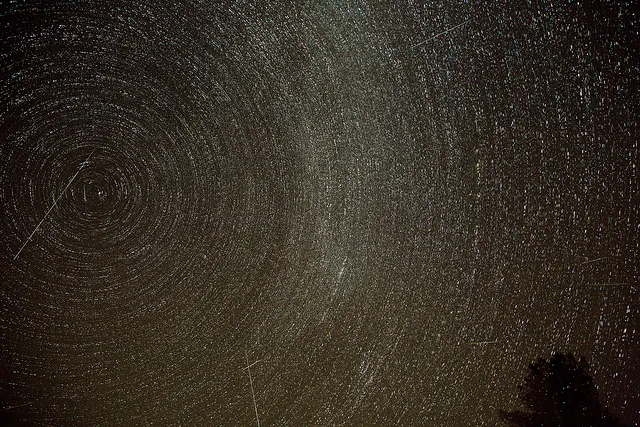“Go outside. Look up,” would probably be the quickest guide to watching the Perseid meteor shower, which is usually one of the best—if not the best—and should be extra impressive this year, thanks to Jupiter. This is the Internet, though, and we’re all scattered around the country (and globe), so let’s take a bit of a closer look at some additional helpful information (though going outside and looking up is still a good start).
The biggest concern when trying to get a good view of the Perseids (after finding an area as free of light pollution as possible) is cloud cover. Just because the peak of the shower is tonight doesn’t mean it’s the only night you can watch, and the Washington Post has a helpful three-day cloud cover guide for the contiguous United States over the weekend. Basically, the southwest should be the clearest for all three days, the northwest is OK tonight and then clouds over, and the midwest starts out cloudy in the north tonight and then shifts more towards the south over the weekend. The view from the east cost is a mixed bag depending on day and location but should provide clear viewing at some point this weekend, and the Ohio/Illinois area is clear tonight before clouding over.
The good news is that most areas should have at least one night of clear viewing over the weekend. However, timing is also an important consideration, not just due to the timing of the shower’s peak, but also because the Moon will be relatively bright. Earth’s nightlight is about half full right now, which means you’ll want to wait until it sets in your area to get the best possible view, though it won’t completely rule out seeing any meteors if you’ve got an early bedtime. Tonight, the Moon will set at around 12:30AM to 1AM depending on your timezone and your location in it (you can check here for exact times in your area).
The rest is up to your ability to keep your eyes on the sky. The Perseids appear to radiate from the constellation Perseus in the North, but you’re better off just facing North and looking up to see as much of the sky as you can at once, giving yourself the greatest chance of seeing as many as possible. The best viewing, all other factors aside, will come tonight and tomorrow between midnight and dawn, when rates could reach as high as 200 meteors per hour, thanks to the aforementioned interference of Jupiter. Enjoy! (And if you can’t see it for yourself, you can always watch a live stream.)
(image via Steve Ryan on Flickr)
Want more stories like this? Become a subscriber and support the site!
—The Mary Sue has a strict comment policy that forbids, but is not limited to, personal insults toward anyone, hate speech, and trolling.—
Follow The Mary Sue on Twitter, Facebook, Tumblr, Pinterest, & Google+.









Published: Aug 11, 2016 04:37 pm